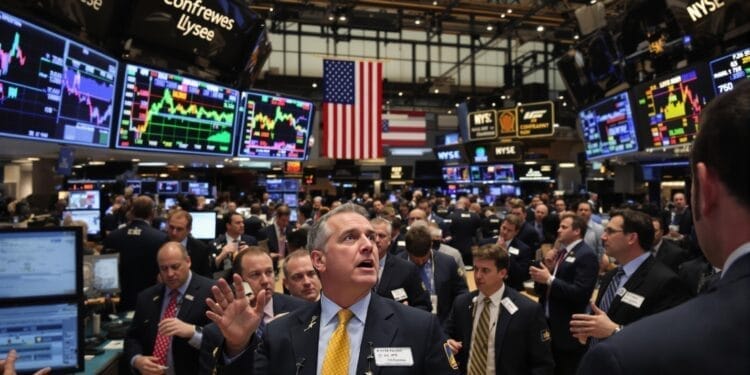The markets are acting…strange. Not crash-and-burn strange, yet, but unsettling. Mike Novogratz, CEO of Galaxy Digital, calls it a “Minsky Moment” – that point when years of easy money and ignored debt finally demand attention. It’s not a prediction of doom, exactly, more like a bracing slap of reality. Tariffs are up, Trump’s back in the mix, and suddenly, the U.S. looks a little less like a global superpower and a bit more like…well, an emerging market. Which, frankly, is a new feeling for most of us.
- The markets are showing signs of instability, with concerns about easy money policies and rising debt levels. This is leading to a reassessment of the U.S.’s economic standing.
- Investors are becoming risk-averse and seeking safer havens for their capital, which could benefit cryptocurrencies like Bitcoin. Bitcoin’s performance is increasingly tied to macroeconomic factors and its adoption as an alternative asset.
- The U.S. economy is exhibiting characteristics of an emerging market, such as rising interest rates and a weakening dollar. This situation raises concerns about the sustainability of current financial policies, particularly regarding national debt.
Equities are down ten percent this year, which sounds scary, but Novogratz thinks it’s not nearly enough. The shifts happening now are bigger than a simple market correction. We’re in a “risk-off” environment, meaning investors are getting twitchy and looking for safer places to park their cash. And that’s where things get interesting for crypto. Bitcoin, usually, does pretty well when the world feels wobbly, unless everyone just decides to hide under their beds. It’s a delicate balance.
There are two stories driving Bitcoin right now. The first is the macro story – the one playing out in gold’s recent surge. Money’s flowing *out* of the dollar, seeking refuge in anything that isn’t tied to the increasingly unpredictable U.S. political and economic scene. The second is the adoption story, which is slower, messier, but still happening. Bitcoin is starting to trade less like a tech stock and more like…itself. It’s still early days for widespread acceptance, but the decoupling from traditional markets is a significant development.
A Worrying Resemblance
Here’s the part that should give everyone pause: Novogratz points out the U.S. is starting to resemble an emerging market. Rising interest rates *and* a weakening dollar? That’s a combination we haven’t seen in decades. It’s a recipe for trouble, and markets are signaling they’re not thrilled with the direction things are heading. Trump’s policies, while popular with some, are being viewed as unsustainable. A small bump in treasury yields, he notes, can add up to a *huge* cost when you’re staring down $35 trillion in national debt. It’s a bit like trying to pay off a credit card with a handful of pennies.
Bitcoin and gold, according to Novogratz, are essentially report cards on how well we’re managing the national finances. They’re honest indicators, unburdened by political spin. Economist Hyman Minsky argued that periods of stability breed complacency, and that complacency eventually leads to crisis. The U.S. has enjoyed a long period of being able to run up deficits without consequence. That grace period, Novogratz suggests, might be coming to an end. It’s not a comfortable thought.
The situation isn’t hopeless, but it requires a dose of realism. The markets aren’t panicking *yet*, but they’re definitely sending a message. And that message, translated from Wall Street jargon, is pretty simple: “Slow down. This is getting out of hand.” Whether anyone in power is listening is another question entirely. But for those paying attention, Bitcoin – and gold – might just be offering a glimpse of what’s to come.

















